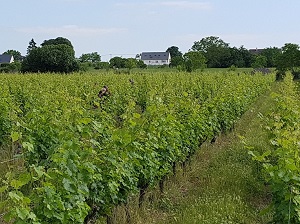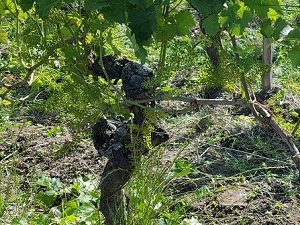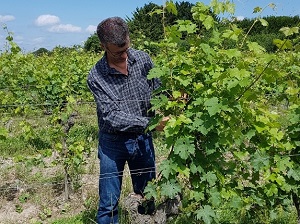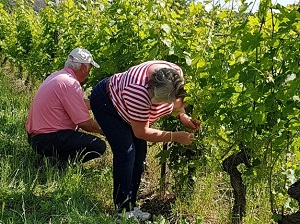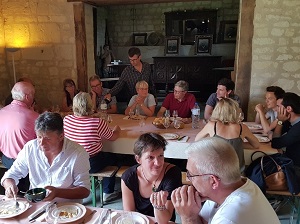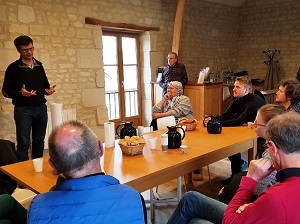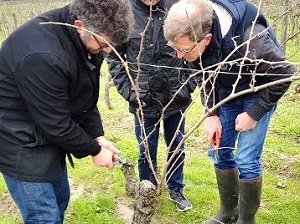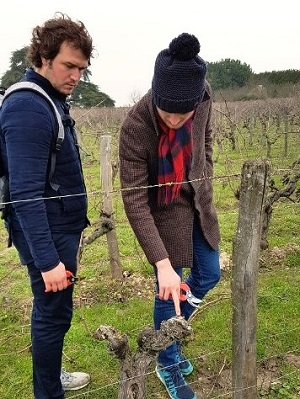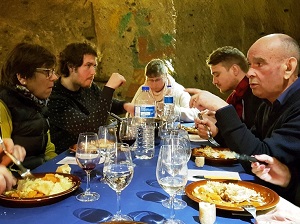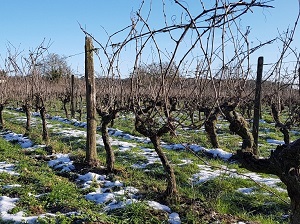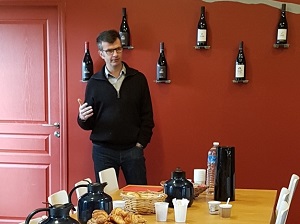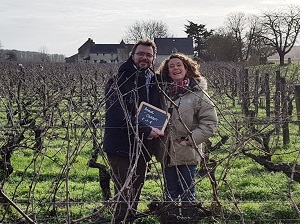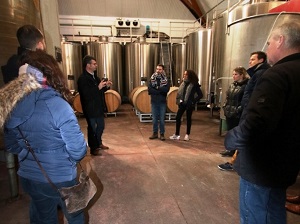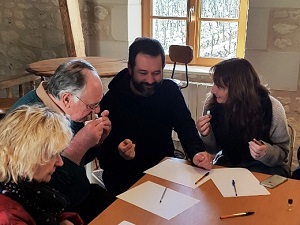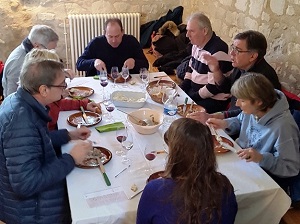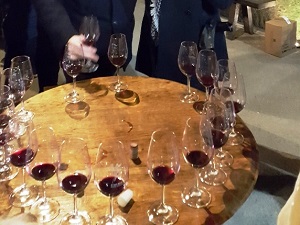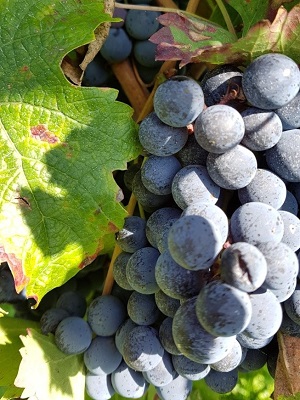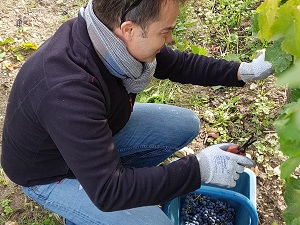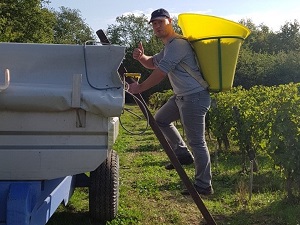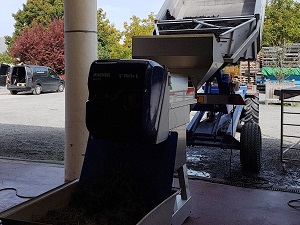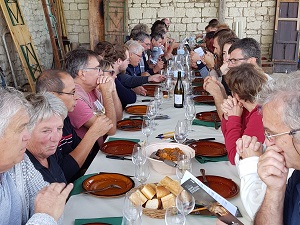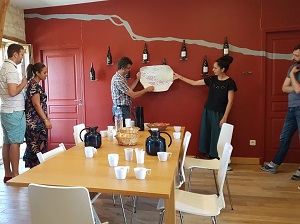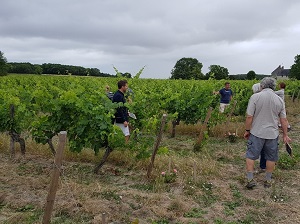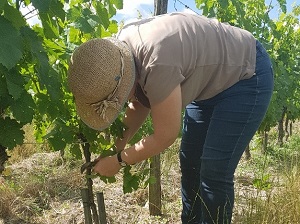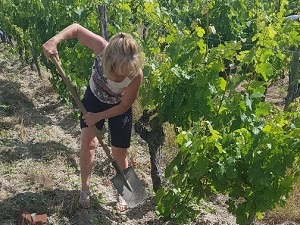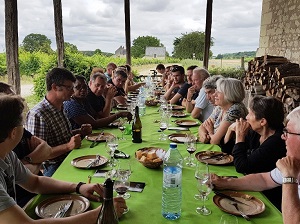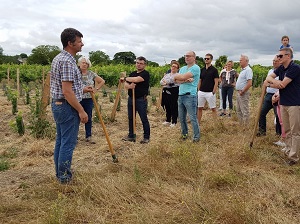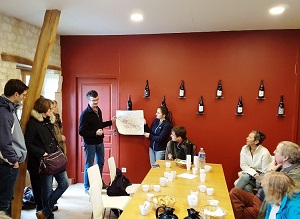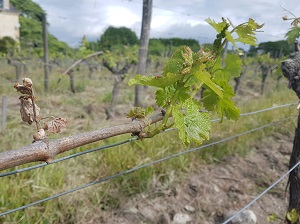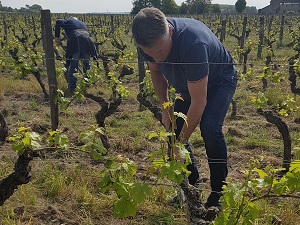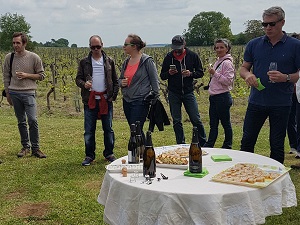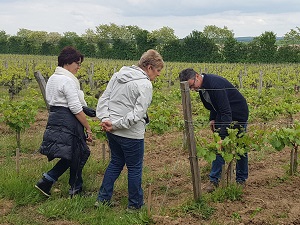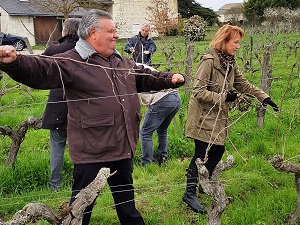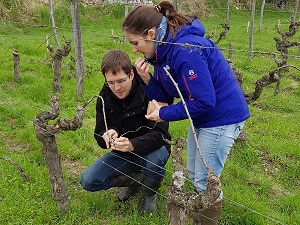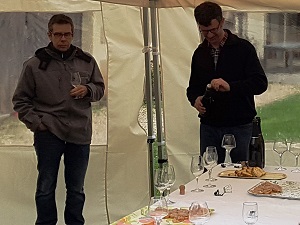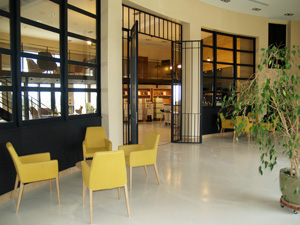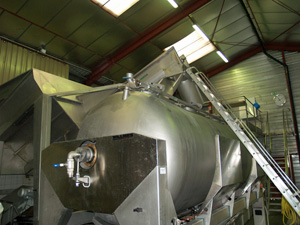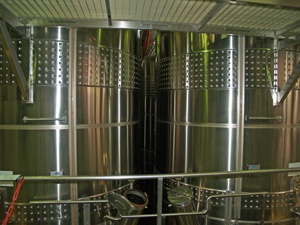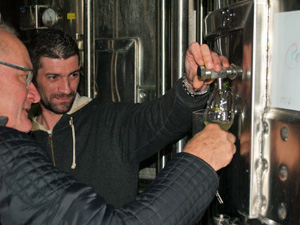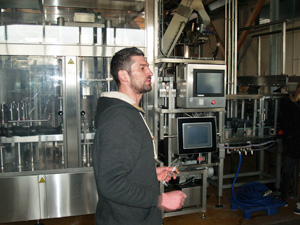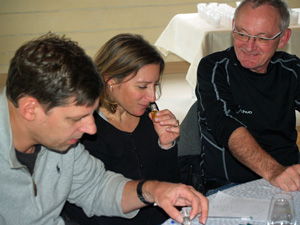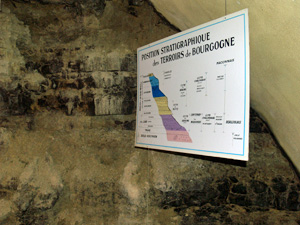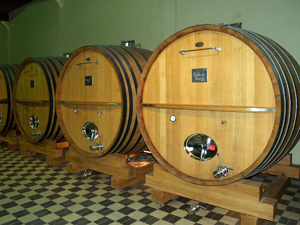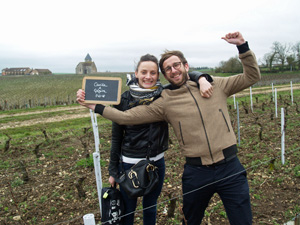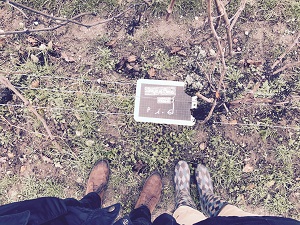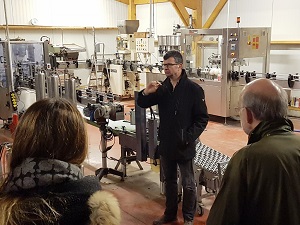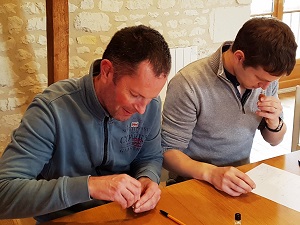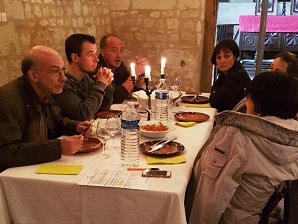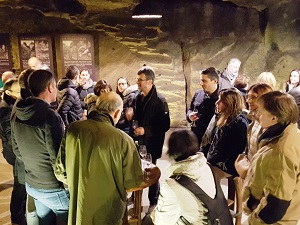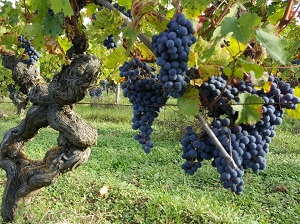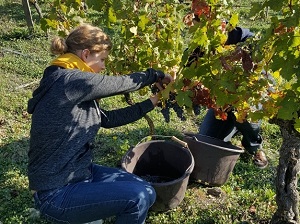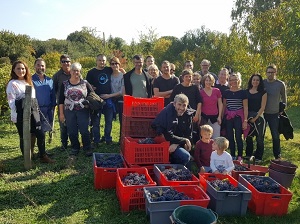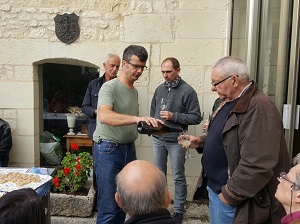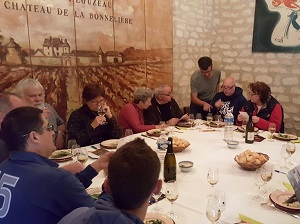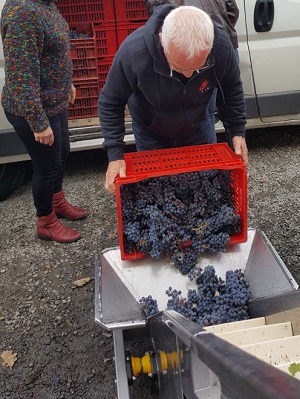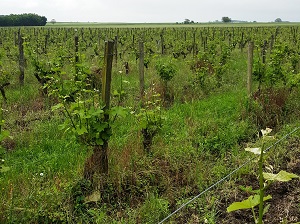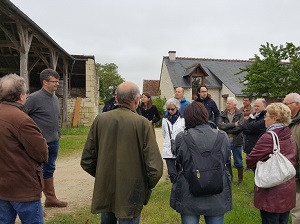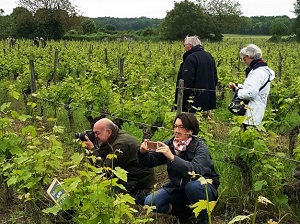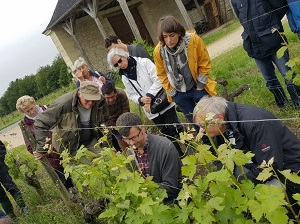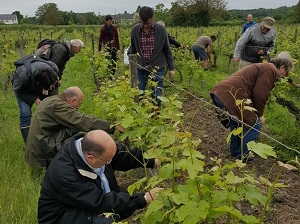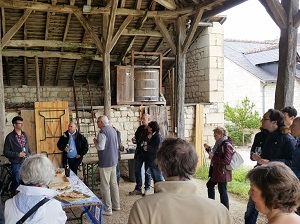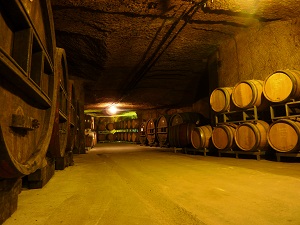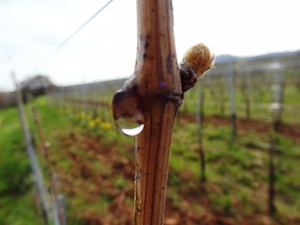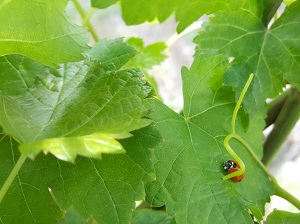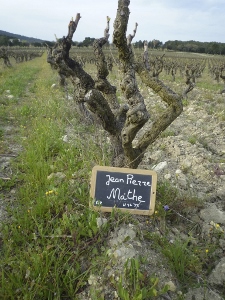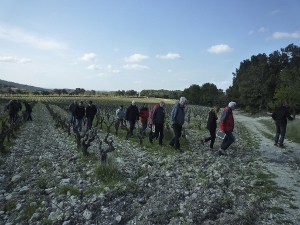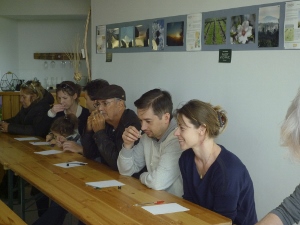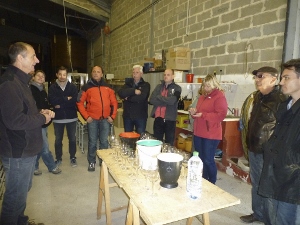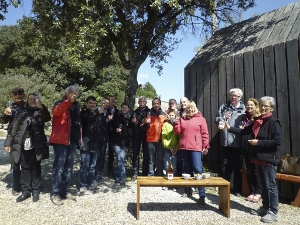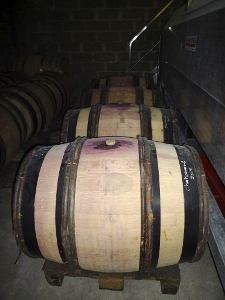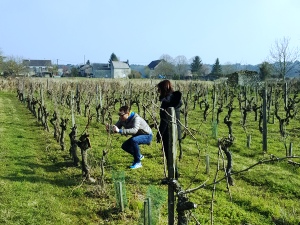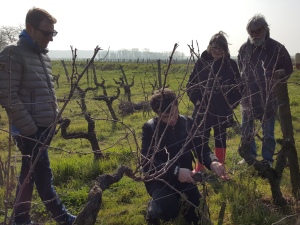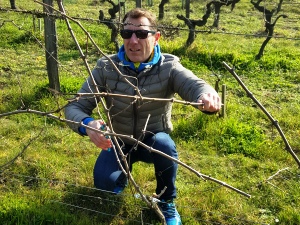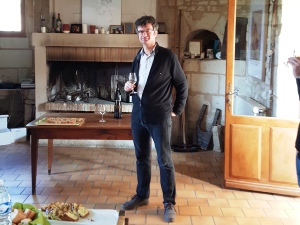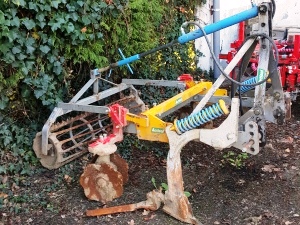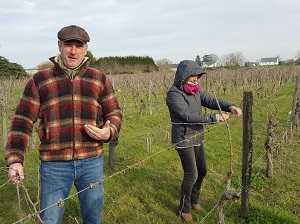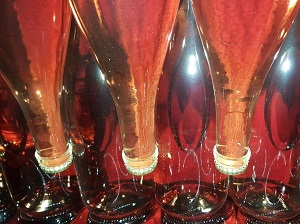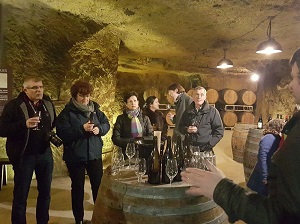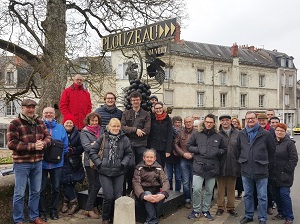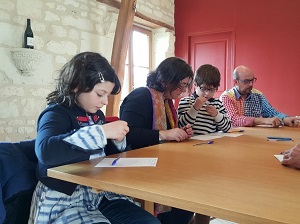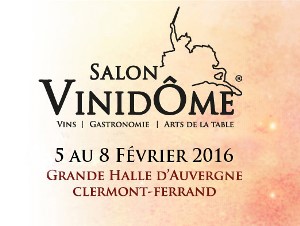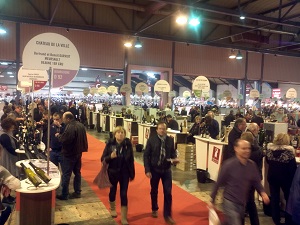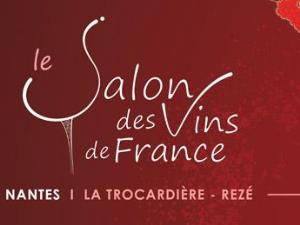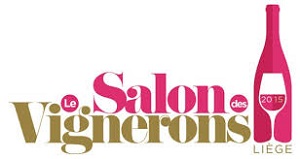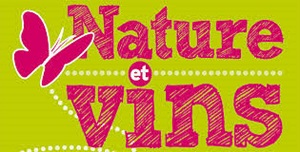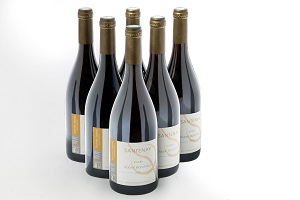Harvesting the Cabernet Franc grapes in the Loire Valley
- Categories :
- Château de la Bonnelière
- Loire Valley
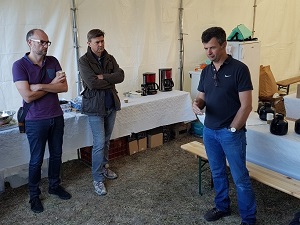
After a quick introduction to the winery and some pain au chocolat, we were all set to head out into the vineyard and get stuck into harvesting the grapes.
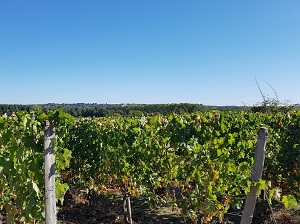
The Clos Neuf vineyard is located on the left bank of the River Vienne, as are all of Château de la Bonnelière’s plots. The soil of this plot is made up of sand and gravel, a terroir that favours the lighter red or rosé wines of those that the winery produces. This year the grapes from the Clos Neuf vineyard will be used to make rosé.
At the start of the summer, the harvest looked as though it would be very early, but the dry and hot weather had slowed down the vines. The grapes were however in great shape, and packed full of the sugar needed to make a good wine!
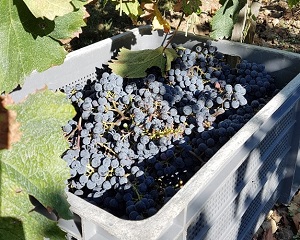
The grapes are picked and then put into crates, so that the grapes remain as intact as possible before being put into the press. After a few instructions of which grapes to pick, and which to leave, as well as a few safety tips, the team was ready. In pairs we spread out amongst the rows to start the harvest. Our crates quickly filled with the picked bunches.
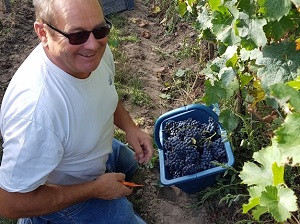
We stopped mid-morning for a harvester’s snack of rillettes and a glass of Chinon to keep the spirits high for the last few snips of the secateurs! We managed to pick the whole plot over the weekend, and with no cuts whatsoever!
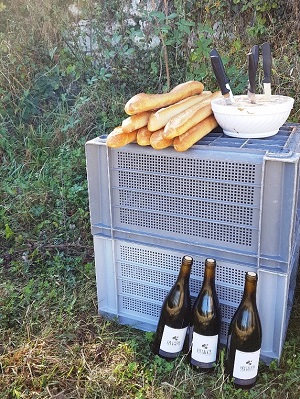
We then returned to the winery for a spot of lunch and a tasting of the different wines produced by the château, including the 2016 vintage of the Clos de la Bonnelière. This gave us an idea of the wine to come, as it is the one chosen for the Gourmet Odyssey Wine Experience.
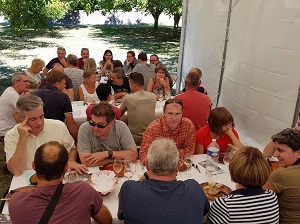
After lunch, we visited the adopted vines, to encourage them in the last stretch before being ready to harvest. The lack of water had slowed down the maturing process of the grapes, and we will have to wait almost two weeks before they are fully ripe. We’ll see next year when we taste the wine, whether our sweet words had any effect!
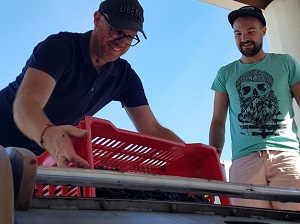
To end our harvest day, we followed the grapes that we had picked in the morning to the press. To make the rosé wine, Marc had decided to press the grapes slowly to extract a nice pink colour from the skins.
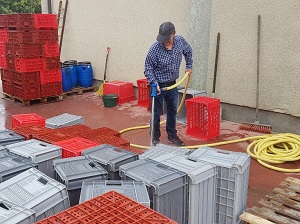
We also learnt about the start of the fermentation cycle for making the rosé, white and red wines, and finished by tasting some of the white grape juice that had already started the fermentation process, as well as cleaning the material, ready for the next day’s harvest.
We can’t wait to come back next year for the Vinification Experience Days to learn about the next stage of ageing the wines and getting them ready for bottling.
Interested in picking the grapes in the Loire Valley during the harvest or giving an adopt-a-vine gift to someone special? More information on the Wine Experience.



